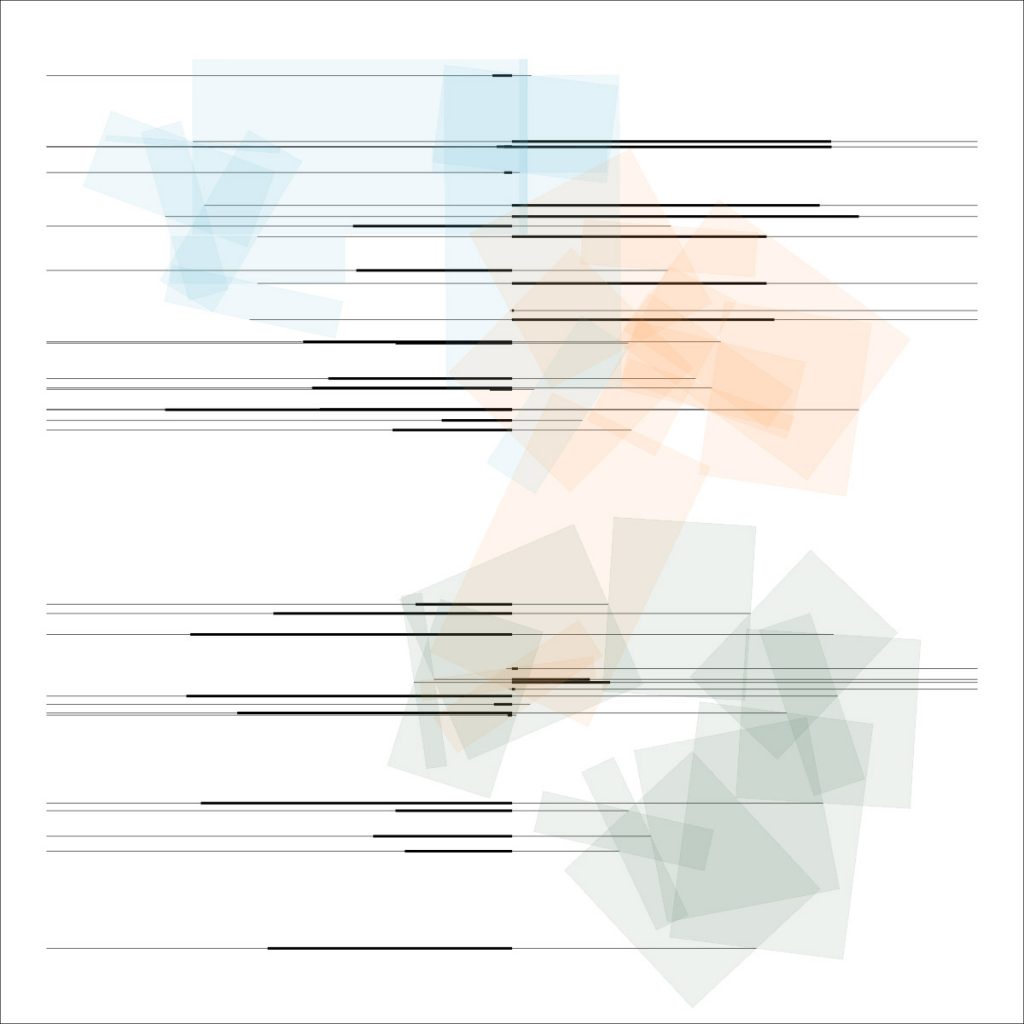I find artist Manfred Mohr’s Algorithmic Modulations inspirational since it uses simple rotations to make sophisticated visual effects. In the project, lines and color bands are used to present the n-dimensions rotation in 2-dimensions. The color bands have similar colors of watercolor, like light blue and light violet, which are calming. However, lines that come across those bands are of much darker colors, which are nearly back. The contradictory color choices tell us about the artist’s aesthetics and sensibilities.

According to the artist, the algorithm is written in this way: One diagonal path across a 12-D hypercube is selected randomly, which is then put in 3 angular positions. This diagonal path in three positions represents the initial graphic constellation as the inherent generator of the images. After being rotated in 12-D and projected into 2-D, the diagonal-paths become visible as transparent color bands. A thin horizontal black line is drawn starting from each vertex (of all three diagonal paths), crossing the vertical center of the image and continuing to the opposite side. In addition, for each vertex a slightly thicker horizontal black line is drawn starting from the vertical center of the image and continuing to the negative x-value of the respective vertex (reflection from the vertical center). The rotation in 12-D horizontally modulates the black line construct, whereas its symmetric aspect, creates a graphic counterpoint to the visually floating transparent color bands. In the screen-based work the algorithm randomly changes the colors of the 3 transparent bands and occasionally switches completely to white bands on a grey background. On other occasions the 3 bands transform to full color and while returning to their transparency they are overlayed with a shrinking and slowly fading structure revealing the generating diagonal-paths.
![[OLD FALL 2020] 15-104 • Introduction to Computing for Creative Practice](wp-content/uploads/2021/09/stop-banner.png)